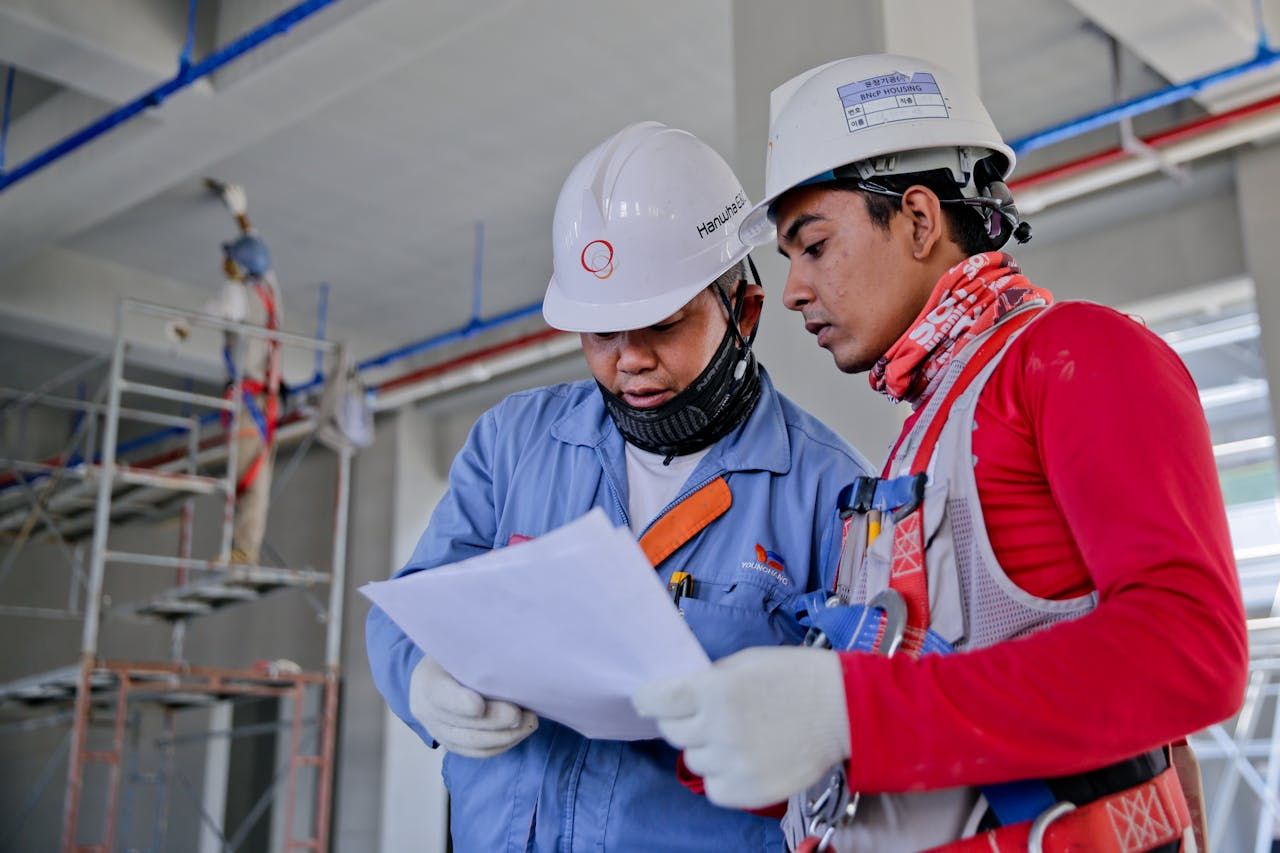Speech-Language Pathologist vs. Speech Therapist: Explaining the Difference in 2026
Communication disorders such as speech impediments are often invisible to those who aren't directly affected, but their impact can be profound. For individuals struggling to find the right words, form certain sounds, or even swallow safely, the right support can change everything. And yet, awareness of these challenges, and the importance of addressing them early, is still lacking.
According to Statista (2024), nearly 30% of American audiologists and speech-language pathologists reported that families with young children hardly understood the importance of early detection of speech, language, and hearing issues. That gap is bridged by speech-language pathologists or speech therapists, who assess, diagnose, and treat a wide range of communication and swallowing disorders across all ages.
As more people seek support for communication challenges — whether for themselves or their children — questions often arise about the professionals involved. Who are the experts responsible for diagnosing and treating these issues? What qualifications do they have? In this guide, I will unpack the roles, responsibilities, and terminology behind speech-language pathologists or speech therapists, helping you understand not just the difference in names, but the depth of expertise each professional brings to the table.
Key Things You Should Know About Speech-Language Pathologist vs. Speech Therapist
- Speech-language pathologists and speech therapists are one and the same; the title used doesn’t reflect any difference in education, credentials, or expertise.
- The average salary for an SLP in the U.S. is $85,951 per year (ZipRecruiter, n.d.), with higher earnings possible in medical settings, private practice, or specialized fields.
- SLPs can work in schools, hospitals, private practice, telehealth, research, or specialize in areas like swallowing or voice disorders.
Table of Contents
- Is there a difference between a Speech-Language Pathologist vs. a Speech Therapist?
- Whom do Speech-Language Pathologists and Speech Therapists treat?
- What educational prerequisites are required for Speech-Language Pathologists and Speech Therapists?
- What core skills do Speech-Language Pathologists and Speech Therapists need?
- How long does it take to become a Speech-Language Pathologist or a Speech Therapist?
- What certifications do Speech-Language Pathologists and Speech Therapists need?
- What is the average salary of a Speech-Language Pathologist or a Speech Therapist?
- What challenges do Speech-Language Pathologists face in their careers?
- How Can Collaboration with Audiologists Enhance Patient Outcomes?
- How Can I Evaluate the Quality of an SLP Program?
- Which industries are best for a Speech-Language Pathologist or Speech Therapist?
- What are the different career paths for a Speech-Language Pathologist or Speech Therapist?
- What trends do Speech-Language Pathologists or Speech Therapists need to know about in 2026?
- Other Things You Should Know About Speech-Language Pathologist vs. Speech Therapist
Is there a difference between a Speech-Language Pathologist vs. a Speech Therapist?
The short answer is no. Both terms refer to the same licensed professional who assesses, diagnoses, and treats communication and swallowing disorders. Speech-language pathologist (SLP) is the formal title used in academic and medical settings, while speech therapist is more commonly used by the general public. Some providers may prefer one title over the other depending on how they position their services, but there’s no difference in education, certification, or scope of practice.
As awareness of communication disorders increases and demand for support services grows, the field of speech therapy is expanding rapidly. In fact, the global speech therapy is projected to grow to $18.19 billion by 2032, with a compound annual growth rate (CAGR) of 5.64% from 2024 to 2032. This growth is being driven by early intervention programs, aging populations, and increased access to telehealth—all of which require skilled professionals, no matter what they’re called.
Here’s what you should know:
- Both the roles of a speech-language pathologist and a speech therapist require a master’s degree, clinical fellowship, and national certification.
- The job duties are the same: diagnosing and treating speech, language, communication, cognitive, and swallowing disorders.
- The title someone uses may reflect personal preference or setting, not expertise or training.

Whom do Speech-Language Pathologists and Speech Therapists treat?
SLPs work with people across the entire lifespan, from infants to older adults. Their patients aren’t limited to those struggling with articulation or stuttering; they include anyone facing challenges with communication, cognition, language, voice, or swallowing. Whether the issue is developmental, neurological, or the result of injury or illness, SLPs provide critical support to help individuals communicate more effectively and live more independently.
Here’s a closer look at the populations they serve:
- Infants and Toddlers: Children with developmental delays, feeding issues, or early signs of language disorders.
- School-Aged Children: Kids with articulation disorders, language delays, learning disabilities, or social communication challenges.
- Adults Recovering from Illness or Injury: Individuals who’ve experienced stroke, brain injury, or neurological conditions like Parkinson’s or ALS.
- People with Cognitive-Communication Disorders: Those facing memory, attention, or problem-solving difficulties that impact communication.
- Individuals with Swallowing Disorders (Dysphagia): Patients who have trouble safely swallowing food or liquids, often seen in medical or geriatric settings.
- Professionals with Voice Strain: Teachers, singers, or public speakers experiencing hoarseness or vocal fatigue.
- Bilingual or Multilingual Clients: People navigating language differences or seeking culturally responsive care.
SLPs don’t just treat symptoms—they support entire communication journeys, helping people express themselves, connect with others, and participate fully in daily life. For a more comprehensive overview, see our list of communication disorders treated by SLPs to enlighten you on the full scope of their impact and expertise.
What educational prerequisites are required for Speech-Language Pathologists and Speech Therapists?
You don’t just wake up one day and start diagnosing language delays or helping someone relearn how to speak after a stroke. Becoming a speech-language pathologist—or speech therapist, as many people say—requires years of focused education, clinical training, and a deep understanding of both human communication and the science behind it. In fact, with over 180,800 SLPs currently employed across the US (BLS, 2024), this field demands a high level of expertise and dedication. It’s a profession that blends empathy with expertise, and the path to entry is anything but casual.
Here’s what the typical journey looks like:
- Bachelor’s Degree: A four-year undergraduate degree is required, usually in communication sciences and disorders (CSD) or a related field like linguistics, psychology, or biology.
- Master’s Degree in Speech-Language Pathology: A graduate degree from an accredited program is essential and includes both academic coursework and hands-on clinical experience.
- Clinical Fellowship: After graduating, candidates complete a supervised clinical fellowship of 1,260 hours or roughly 36 weeks to gain practical experience (American Speech-Language-Hearing Association, n.d.).
- National Certification (CCC-SLP): Most SLPs earn the Certificate of Clinical Competence in Speech-Language Pathology through the American Speech-Language-Hearing Association (ASHA).
- State Licensure: Each state in the US has its own licensing requirements, which often include passing the Praxis exam in speech-language pathology.
If you’re interested in leaning toward the medical and sciences fields for your undergraduate degree, you can check out our list of the top ranked biological science degree programs to kickstart your journey.

What core skills do Speech-Language Pathologists and Speech Therapists need?
Being a successful speech-language pathologist or speech therapist requires much more than just knowledge of language and speech mechanics. It’s about understanding human communication in all its forms and adapting your approach to each individual's unique needs. Whether helping a child with speech delays or guiding an adult recovering from a stroke, the right skill set is essential to providing effective care and support.
Here are the core skills every speech-language pathologist or speech therapist should possess:
- Strong Communication Skills: SLPs must be able to communicate complex concepts to patients, families, and healthcare teams. They need to explain diagnoses, treatment plans, and goals in a clear, compassionate, and accessible way.
- Active Listening: Effective therapy relies heavily on listening—not just to speech, but also to the emotional and psychological needs of the patient. Active listening helps build trust and ensures that therapists fully understand the challenges their patients face.
- Patience and Empathy: Many patients, especially those with neurological conditions or developmental delays, require time and consistent support. A patient, empathetic attitude is essential for making the therapy process less daunting and more effective.
- Problem-Solving and Critical Thinking: Every patient’s needs are different, and SLPs must develop personalized treatment plans. This requires not only creativity but also the ability to think critically about language patterns, cognitive abilities, and possible therapeutic approaches.
- Knowledge of Anatomy and Physiology: A deep understanding of the anatomy involved in speech, swallowing, and cognition—such as the vocal cords, respiratory system, and brain structures—is fundamental for diagnosing and treating disorders accurately.
- Adaptability: Since therapy needs vary greatly, from speech delays in children to stroke recovery in adults, flexibility and the ability to adjust treatment plans on the fly are vital. Being open to new methods and technologies also ensures SLPs stay effective as the field evolves.
- Technical Proficiency: Today’s SLPs often use specialized technology to assess, diagnose, and treat communication disorders. Proficiency with software tools, augmentative communication devices, and video therapy platforms is becoming increasingly important.
SLPs blend science, skill, and human connection to improve their patients' quality of life. These core abilities enable them to do their job effectively while building lasting, meaningful relationships with those they treat. To find out if this is a lucrative career path for you, check out our guide on speech therapist salary.
How long does it take to become a Speech-Language Pathologist or a Speech Therapist?
Embarking on a career as an SLP is a fulfilling yet demanding journey. It’s a profession that requires years of focused education and hands-on experience, but for those passionate about helping others communicate, it’s a path worth taking. Whether you're assisting a child with speech delays or aiding an adult recovering from a stroke, becoming an expert in this field takes time, dedication, and a clear understanding of both the science and the human aspects of communication.
Typically, it takes around six to nine years to become a fully certified SLP, depending on your educational timeline and personal circumstances. The road to becoming an SLP is structured, beginning with a solid foundation in undergraduate studies, followed by a specialized graduate program and clinical training.
Here’s how the timeline breaks down according to Northeastern University (2024):
- Earn an Undergraduate Degree (4 years): The first step is earning a bachelor’s degree, typically in communication sciences and disorders or a related field like linguistics or psychology.
- Complete a Master’s Degree in Speech-Language Pathology (2-3 years): After your undergrad, you’ll need to pursue a master’s degree in speech-language pathology, which includes a combination of coursework and hands-on clinical training. One of the master's in SLP degree benefits is getting qualified for licensure. Another is the higher earning potential.
- Post-Graduate Clinical Fellowship (36 Weeks): After earning your master’s, a supervised clinical fellowship allows you to gain real-world experience working with patients, often under the guidance of a seasoned professional.
- Pass the Praxis Examination (Varies): The Praxis exam in speech-language pathology is a key component to demonstrate your proficiency and readiness to practice as an SLP, which usually takes a few months of preparation and a single test day to complete.
- Apply for State Licensure and ASHA Certification: Finally, you’ll need to meet the licensing requirements in your state and apply for certification through the American Speech-Language-Hearing Association (ASHA). This will take you anywhere from a few weeks to several months, depending on your state’s processing times and whether all documentation is submitted promptly.
If you decide to take time off between completing your undergraduate degree and enrolling in a master’s program, the timeline may extend a bit further. You can see our list of the top online master’s in communication disorders programs to help you make informed decisions on your SLP journey.
What certifications do Speech-Language Pathologists and Speech Therapists need?
If you’re planning to become a speech-language pathologist or speech therapist, certification isn’t just a box to check; it’s the credential that validates your expertise and opens the door to professional practice. With growing awareness of communication disorders and the increasing demand for early intervention, it’s no surprise people are asking: are speech pathologists in demand? The answer is yes—with a job outlook of 18% (BLS, 2024). Plus, with roles like pediatric speech therapists earning up to $128,000 annually (ZipRecruiter, n.d.), the right certifications can help you stand out in a growing, competitive field.
Here are the key certifications and credentials required to practice as an SLP in the U.S.:
- American Speech-Language-Hearing Association Certificate of Clinical Competence in Speech-Language Pathology (ASHA CCC-SLP): This is the gold standard for SLPs. Issued by the ASHA, the CCC-SLP demonstrates that you’ve completed your graduate degree, passed the Praxis exam, and successfully completed a Clinical Fellowship (usually 36 weeks of supervised practice). Most employers require this certification.
- State Licensure: Every US state requires SLPs to be licensed to practice. While requirements vary slightly, they typically align with ASHA’s standards. Licensure usually involves submitting proof of education, clinical hours, Praxis scores, and completing continuing education over time to maintain it.
- Optional Teaching Certification (for school-based SLPs): If you plan to work in a public school setting, many states require additional certification through the state’s Department of Education. This may involve coursework in teaching or child development and meeting additional testing requirements. But how about the other way around? Can a teacher become a speech pathologist? Yes, it is possible to transition from teaching to practicing as an SLP.
- CPR and First Aid Certification (in some clinical settings): For SLPs working in hospitals, rehabilitation centers, or private practice, some employers may require current CPR and basic life support certification.
Certification is not a one-time achievement—it’s part of a career-long commitment to learning. Staying certified means continuing education, keeping up with best practices, and always striving to provide the highest standard of care.

What is the average salary of a Speech-Language Pathologist or a Speech Therapist?
According to ZipRecruiter (n.d.), the average annual salary for a speech-language pathologist or speech therapist in the US is approximately $85,951, but that number only tells part of the story. Depending on factors like location, experience level, and specialization, annual salaries can vary significantly.
You can look into speech pathologist salary by state to get a picture of where SLPs are being paid most in the U.S..
As shown in the chart below, SLPs in the 25th percentile earn around $73,000, while those in the 75th percentile bring in closer to $95,000. This wide pay range reflects the many opportunities available in the field—whether in schools, hospitals, private practice, or high-paying specialties like pediatric therapy.
What challenges do Speech-Language Pathologists face in their careers?
Speech-language pathologists encounter multifaceted challenges such as managing heavy caseloads, meeting administrative and documentation demands, and navigating insurance and reimbursement complexities. Professionals must continuously update their skills to integrate emerging technologies and evolving treatment methods while managing the pressures of clinical efficiency and patient outcomes. Additionally, geographic disparities can influence compensation levels, as illustrated by trends in speech pathologist annual salary.
How Can Collaboration with Audiologists Enhance Patient Outcomes?
Interdisciplinary collaboration between speech-language pathologists and audiologists facilitates a holistic diagnostic and therapeutic approach. In clinical settings, coordinated assessments help identify both communication and hearing challenges early on, leading to more targeted treatment plans. This partnership not only streamlines patient referrals and follow-ups but also drives continuous improvements in intervention strategies and technology adoption. For opportunities that extend the scope of speech therapy into related auditory fields, explore how do you become an audiologist.
How Can I Evaluate the Quality of an SLP Program?
To evaluate an SLP program effectively, consider its accreditation status, curriculum rigor, clinical practicum opportunities, and alignment with industry standards. Prospective students should verify that the program meets certification requirements and offers robust hands-on training to prepare for real-world challenges. Comparing program outcomes, faculty expertise, and support services is crucial when determining if a program will adequately equip you for professional success. For instance, reviewing an ASHA accredited online degree can provide clarity on program credibility and flexibility.
Which industries are best for a Speech-Language Pathologist or Speech Therapist?
SLPs have no shortage of career options, but some industries stand out as the strongest launchpads. As noted by the US Bureau of Labor Statistics (2023), nearly 40% of SLPs worked in educational settings, making schools—both public and private—the top employer. Another 24% built careers in outpatient clinics alongside physical and occupational therapists or audiologists, reflecting the rise of collaborative care. Hospitals employed about 15%, offering opportunities in both acute care and rehab settings. Nursing and residential care facilities made up 4% of the field, primarily serving older adults. And for those who prefer independence, 3% of SLPs were self-employed, often managing private practices or contracting with schools and healthcare providers.
Here’s a visual breakdown of where SLPs are making the biggest impact across industries for your reference:
What are the different career paths for a Speech-Language Pathologist or Speech Therapist?
Speech therapy isn’t a one-path profession—it’s a launchpad. Whether you're drawn to classrooms, hospitals, startups, or research labs, a career in speech-language pathology can evolve with your passions and expertise. As communication challenges become better understood across age groups and conditions, the demand for specialized roles within the field continues to grow.
- School-Based SLP: Supports children with communication disorders in public or private schools, often working closely with educators and special education teams.
- Medical or Hospital SLP: Works with patients recovering from strokes, brain injuries, or neurological disorders, often addressing swallowing and cognitive-communication issues.
- Private Practice Owner: Provides therapy directly to clients, often specializing in specific populations like toddlers, adults with speech trauma, or bilingual families.
- Corporate or Tech Consultant: Advises tech companies on voice recognition, AI speech tools, or accessibility features for individuals with speech and language challenges.
- University Educator or Researcher: Teaches the next generation of SLPs or contributes to academic research on speech, language, and hearing science.
Whichever career path you choose, the road will always be demanding. However, for those drawn to helping others find their voice, it’s a calling worth the commitment. For more cost-effective degree options, we recommend exploring our list of the cheapest online SLP programs to help you kickstart your journey without breaking the bank.
What trends do Speech-Language Pathologists or Speech Therapists need to know about in 2026?
Speech therapy is undergoing a quiet revolution—powered not just by dedicated professionals, but by the rise of intelligent tech, culturally responsive methods, and boundary-breaking accessibility. As digital tools become more sophisticated and the definition of therapy expands beyond the traditional clinic, today’s SLPs are stepping into a dynamic, hybrid role: part clinician, part technologist, part innovator.
- Jessica, the First AI Speech Therapist Helper: Developed by health tech company Better Speech, Jessica is an AI-powered speech therapy assistant designed to support individuals with personalized, on-demand treatment. Using advanced speech recognition and natural language processing, Jessica listens to users’ speech patterns, identifies problem areas, and suggests tailored exercises to strengthen communication. Available 24/7 and completely virtual, she removes traditional therapy barriers like scheduling and cost, making consistent practice possible for those who might otherwise go without.
- Telehealth Therapy: Once considered a backup plan, teletherapy is now a frontline service. It enables SLPs to reach clients in rural, remote, or mobility-limited settings while reducing overhead and commuting time. One standout example is the recent partnership between Super Duper Publications and Coviua—leading telehealth platform—to create immersive, interactive therapy tools that combine clinical rigor with engaging content. With collaborations like this pushing the boundaries of what’s possible online, teletherapy is slowly becoming a cornerstone of modern speech-language care (Newswire, 2024).
- Augmentative and Alternative Communication: AAC devices—from symbol-based apps to eye-tracking tech—are becoming more intuitive and widely adopted. These tools provide essential communication pathways for individuals with little or no verbal speech, enabling greater independence and engagement. Today’s AAC systems often include predictive text, customizable vocabularies, and cloud-based syncing for cross-device use. SLPs play a crucial role in evaluating, selecting, and customizing AAC for clients of all ages and abilities (ASHA, n.d.).
- Beatboxing as a Speech Therapy Tool: Beatboxing isn’t just a performance art; it’s a clinically promising tool for improving speech fluency and articulation. This vocal percussion style engages breath control, rhythm, and muscle coordination, making it a unique and culturally resonant option for clients, especially youth. Research by Black Westchester (2025) suggests beatboxing activates key language centers in the brain, including Broca’s area, while offering a fun and empowering alternative to traditional drills. Its accessibility, requiring only a voice, makes it an inclusive option across socioeconomic backgrounds.
Are you looking for an alternative career in science? You may want to explore becoming a forensic scientist. And if you're asking "is forensic science hard?" Well, it is, but enjoying and loving what you do will make things easier.
Here’s What Speech-Language Pathologists Have to Say About Their Careers
- "Working as an SLP in a pediatric hospital has been one of the most rewarding experiences of my life. Seeing a nonverbal child speak their first word after weeks of therapy is indescribable—it makes all the schooling and late nights worth it. I love that this field combines science, compassion, and creativity every single day. I never feel like I’m just doing a job—I’m making real change." — Jared
- "The flexibility in this career is unmatched—I’ve worked in schools, private clinics, and now I run my own telehealth practice. Speech-language pathology gave me the tools to adapt and grow while still doing deeply meaningful work. With job growth projected at 19% over the next decade, I feel secure and energized about the future. Every session I lead reminds me why I chose this path." — Warner
- "I was drawn to SLP because of my love for language and neuropsychology, but I stayed for the human connection. Helping stroke survivors regain their voice has taught me resilience, empathy, and the power of small victories. The demand for SLPs is strong, but more than that, the impact is profound. It’s not just a career—it’s a calling." — Vivienne
Key Findings
- Nearly 30% of U.S. audiologists and SLPs reported that families with young children hardly understood the importance of early detection of speech, language, and hearing issues.
- The global speech therapy is projected to grow to $18.19 billion by 2032, with a compound annual growth rate (CAGR) of 5.64% from 2024 to 2032.
- There are over 180,800 speech-language pathologists currently employed across the US.
- The average annual salary for an SLPin the US is approximately $85,951.
- The highest earning SLP role is pediatric speech therapists, taking home up to $128,000 annually.
Other Things You Should Know About Speech-Language Pathologists vs. Speech Therapists
How has the emergence of teletherapy changed SLP careers?
Teletherapy has dramatically expanded access to speech-language pathology services, allowing therapists to reach clients regardless of location. This shift has created more flexible work options for SLPs, including remote roles and private practice opportunities that weren’t as viable before. With digital platforms streamlining session delivery and documentation, many therapists report increased efficiency and reduced overhead. It also enables continuity of care for clients who move or have mobility challenges. Overall, teletherapy has redefined how and where SLPs work—without compromising care quality.
What is the difference between pediatric and adult speech therapy?
Pediatric speech therapy focuses on early communication challenges like articulation, language development, and speech delays, often using play-based interventions. In contrast, adult speech therapy frequently addresses speech and swallowing issues stemming from neurological conditions such as stroke, traumatic brain injury, or Parkinson’s disease. The goals, tools, and session structures differ, with pediatric therapy emphasizing growth and development, while adult therapy often involves recovery or maintenance. Pediatric therapists commonly work in schools or early intervention, while adult therapists may be found in hospitals, rehab centers, or home health. While both require the same foundational training, they demand different skill sets and clinical approaches.
What are the continuing education requirements for SLPs and Speech Therapists?
Speech-language pathologists must complete continuing education units (CEUs) to maintain their state licensure and ASHA certification. Typically, SLPs need around 30 hours of CE every three years for ASHA’s Certificate of Clinical Competence. These courses help professionals stay up-to-date on research, ethics, and new treatment techniques. State boards may have additional or slightly different requirements, so it’s important for therapists to track both. CEU opportunities range from workshops and webinars to university courses and specialized certifications.
How is AI being used in speech therapy?
AI is transforming speech therapy by offering personalized tools that enhance both diagnosis and treatment. AI-driven platforms like Jessica provide 24/7 access to therapy, delivering customized exercises based on real-time speech analysis. These tools use advanced speech recognition and natural language processing to identify issues and track progress over time. AI also helps therapists manage documentation, screen patients, and even predict treatment outcomes. As the technology evolves, it’s expanding therapy access while giving SLPs powerful data-driven support.
References:
- American Speech-Language-Hearing Association. (n.d.). Augmentative and Alternative Communication (AAC). Asha.org. Retrieved 15 May 2025.
- American Speech-Language-Hearing Association. (n.d.). Certification standards for SLP clinical practicum. Asha.org. Retrieved 15 May 2025.
- American Speech-Language-Hearing Association. (n.d.). Clinical fellowship. Asha.org. Retrieved 15 May 2025.
- Better Speech. (n.d.). Jessica: AI speech therapy helper. Betterspeech.com. Retrieved 15 May 2025.
- Black Westchester. (2023). Beatboxing as a therapeutic tool for speech impediments by Jose Valentino Ruiz Ph.D. and Andrew Wang. Blackwestchester.com. Retrieved 15 May 2025.
- Newswire. (2024). Super Duper Publications announces partnership with Coviu to empower telehealth services. Newswire.com. Retrieved 15 May 2025.
- Northeastern University. (2023). How long does it take to become a speech therapist? Bouve.northeastern.edu. Retrieved 15 May 2025.
- SNS Insider. (2024). Speech therapy market report. Snsinsider.com. Retrieved 15 May 2025.
- Statista. (2023). Families that understood importance of early detection of speech, language or hearing issues in children in the U.S. 2023. Statista.com. Retrieved 15 May 2025.
- Statista. (2023). Speech therapy market size in the United States from 2022 to 2032. Statista.com. Retrieved 15 May 2025.
- US Bureau of Labor Statistics. (n.d.). Speech-language pathologists. Bls.gov. Retrieved 15 May 2025.
- ZipRecruiter. (n.d.). Highest paying speech pathology jobs. Ziprecruiter.com. Retrieved 15 May 2025.
- ZipRecruiter. (n.d.). Speech pathologist salary. Ziprecruiter.com. Retrieved 15 May 2025.


































